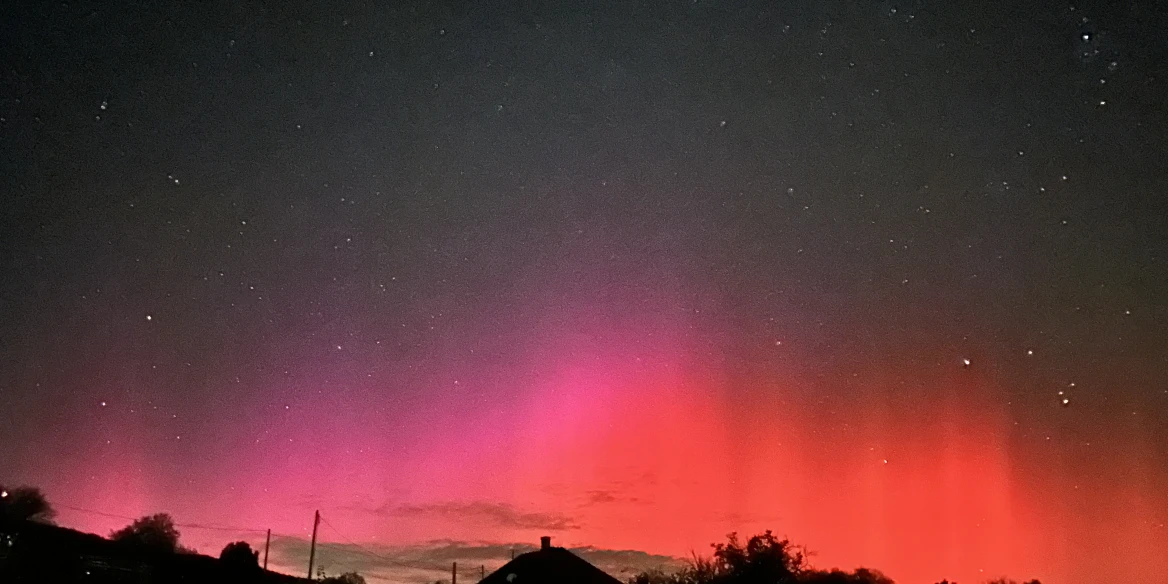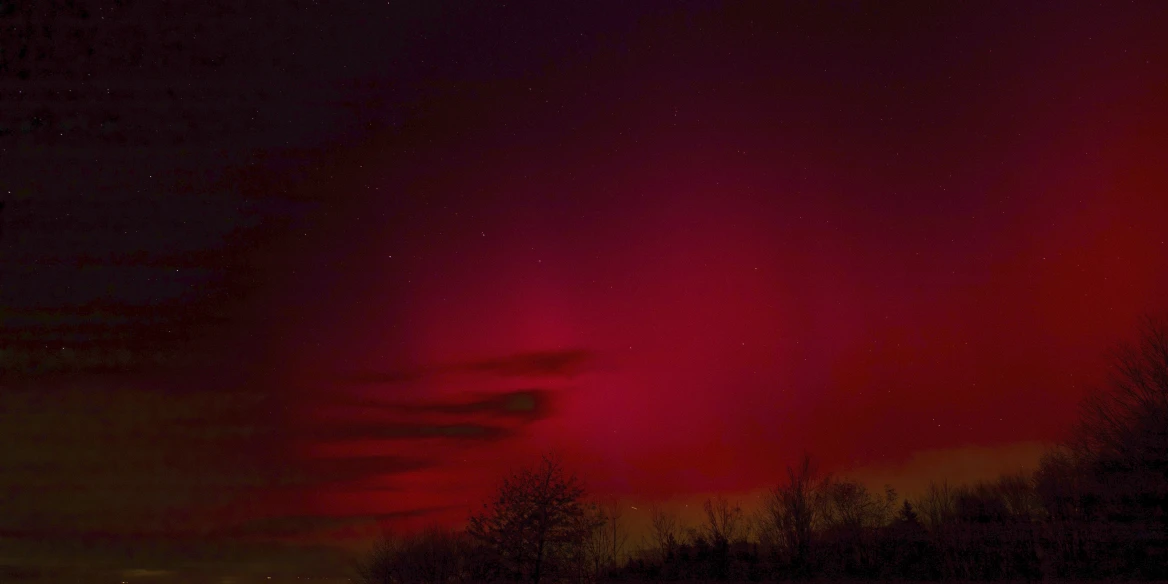In recent years, auroras have been observed from our country several times, including this spring, but such a spectacular display of northern lights as the one seen on the evening of 5 November 2023 is rare. The last such event was almost 20 years ago to the day, in November 2003 (photos of which can be found here). The aurora borealis, or northern lights, as it is called, is mainly visible in the region of the northern (and southern) polar regions, so strong geomagnetic activity is needed to observe it from lower latitudes, such as our own. And although the aurora was visible for several hours on Sunday night, the really bright part lasted for less than fifteen minutes. But during that time, it was so bright that its image overexposed our full-sky camera, which is optimized for the night sky. In the image below, you can clearly see that the side of the 1 m RCC telescope is bathed in red light:

Our resident astronomer on duty at Piszkéstető, Csilla Kalup, described the sight in this way:
I'll never forget stepping out onto the balcony, looking up north, and immediately seeing the crimson glow that covered the entire northern part of the sky. I have seen the aurora borealis twice in my life, both times from Piszkéstető, and both in this year. The first time was on the evening of 23 April, but I can't compare it to the one we experienced on 5 November. I remember in April I had to stand on the balcony for 20 minutes before I started to grasp exactly what I was supposed to see. Even though the full-sky camera showed a beautiful red curtain at the time, those were too faint for the human eye to see, so I couldn't see anything except greyish-white patches of light that brightened and faded over 10-20 seconds. I was expecting the same thing now, so I was completely overwhelmed by the sight, the color, the unmistakable shapes, the details visible in the glow, the columns of light.
Our colleagues took the photos below:

Gábor Balázs, Dabas
Time lapse video taken by our all-sky camera:
Time lapse video recorded by Ágoston Horti-Dávid from Szomor:





